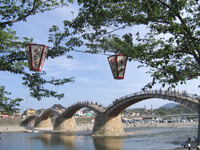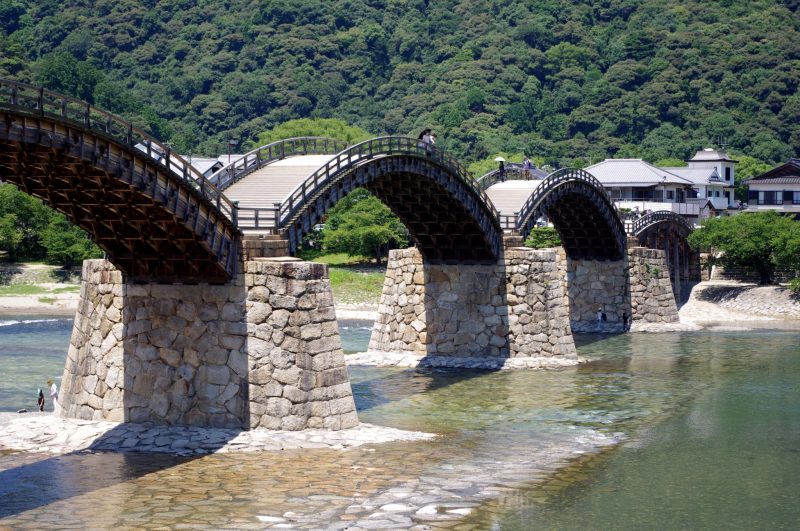
The bridge, known as Kintai-kyo is 5 meters wide and 210 meters long. It’s five, graceful wooden arches are very distinctive and make it one of the most beautiful bridges in Japan. There is a Japanese saying, “Fuji represents mountains, Nachi represents waterfalls and Kintai-kyo represents bridges”. You can also visit Kikko Park, where the Kikkawa family resided. Here, you will find the Iwakuni Historical Museum and the Kikkawa Family Museum, as well as the famous White Snakes of Iwakuni. These white snakes, said to be messengers from Benten, the goddess of wealth, have been designated as a national treasure by the Japanese government. From Kikko Park, you can also take the ropeway to the top of the mountain where you will find Iwakuni Castle. Originally built by Kikkawa Hiroie over a span of seven years, the current castle is an exact reproduction of the original. From here, the panoramic view is very beautiful. Old armor and weaponry are on display in the castle.





